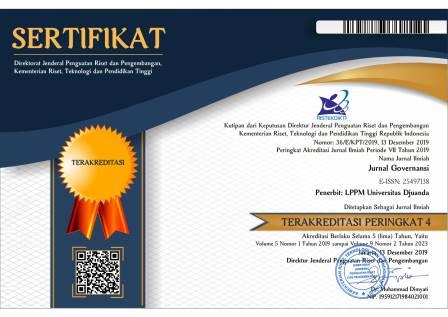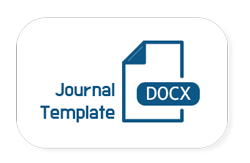FUNGSI PENGEMBANGAN KARIR DALAM MENINGKATKAN KINERJA PEGAWAI DI KECAMATAN BOGOR UTARA
DOI:
https://doi.org/10.30997/jgs.v1i1.271Abstract
Organization, employee performance lies in the human factor (the members or employees) who carry out activities to achieve the goals of the organization itself. Employee performance is a picture of the employees who reflect the expertise, skills and abilities in addition to the employee, employee performance also reflects the willingness to work with passion. Theoretical framework is built by connecting the independent variable (X) development of a career with the dependent variable (Y) databases must address satisfying employees, the relationship between variables is described in the context of career development model of Edwin B.Flipo while the performance of employees described by Simamora, based on the theoretical framework, the operational independent variable (X) is a career development consists of six dimensions, namely: (1) the pattern and sequence of career development, (2) coordination of career development, (3) timeliness, (4) participation in career development, (5) means and infrastructure in career development, (6) the benefits of career development, employee performance while the dependent variable consists of four dimensions, namely: (1) creativity, (2) the ability of analysis and choose an alternative, (3) learning process, (4) problem solving. This study aims to determine the implementation of career development in improving the performance of employees in the District of North Bogor. The method used in this research is descriptive analysis method, which is a problem-solving procedure is investigated by using a state file subject or the object of research is happening right now based on factors that viewed the field as it should or used to describe a fact or a specific population in a systematic character, actual and fast and using the formula Weight Mean Score (WMS). Employee population is the object of observation as much as 42 people, and to determine the sample size formula used Yamane, limiting the number of samples to 31 people. Conclusions obtained from this calculation results show that the function of Career Development in Improving Performance in the District of North Bogor good interpretive criteria, even so the interview stated that there are deficiencies to be corrected.
Key words: Carier, Performance, Merit SystemReferences
Handayaningrat, Soewarno, 1990 Pengantar Ilmu Administrasi dan Manajemen, Jakarta, Haji Mas Agung.
Manulang, 1987 Dasar-dasar Manajemen, Jakarta, Ghalia Indonesia.
Moekijat, 1986 Perencanaan dan Pengembangan Karier Pegawai, Bandung, PT. Remaja Rosdakarya.
Musanef, 1986 Manajemen Kepegawaian di Indonesia, Jakarta, Gunung Agung.
Saksono, Slamet, 1987 Administrasi Kepegawaian, Jakarta, Konisius.
Siagian, Sondang P., 1985 Filsafat Administrasi, Jakarta, Gunung Agung. 1993 Kerangka Dasar Ilmu Administrasi, Jakarta, Pt. Rineka Cipta.
Zainun, Buchari, 1990 Administrasi dan Manajemen Kepegawaian Pemerintah Negara Indonesia, Jakarta, Haji Mas Agung.
Bryant P. 1999. Biodiversity and Conservation. Retrieved October 4, 1999 from http://darwinbio.uci.edu/~sustain/bio65/Titlpage.html
Downloads
Published
How to Cite
Issue
Section
License
Authors who publish with Jurnal Governansi agree to the following terms:
- Authors retain copyright and grant the journal right of first publication with the work simultaneously licensed under a Creative Commons Attribution 4.0 International License that allows others to share the work with an acknowledgement of the work's authorship and initial publication in Jurnal Governansi.
- Authors are able to enter into separate, additional contractual arrangements for the non-exclusive distribution of the journal's published version of the work (e.g., post it to an institutional repository or publish it in a book), with an acknowledgement of its initial publication in Jurnal Governansi.
- Authors are permitted and encouraged to post their work online (e.g., in institutional repositories or on their website) prior to and during the submission process, as it can lead to productive exchanges, as well as earlier and greater citation of published work.



















